What do you think of when the subject of “hospitality” is mentioned? For many people, the term refers specifically to the food and beverage industry, and whilst this is a large and crucial component of hospitality the industry itself encompasses a broad range of services and businesses focused on providing accommodation, food and beverage, and various forms of entertainment and leisure activities to customers.
Dictionary.com defines “hospitality” as:
- The friendly reception and treatment of guests or strangers;
- The quality or disposition of receiving and treating guests in a warm, friendly, generous way;
- The business or act of providing accommodation, food, drink and other services
This dynamic sector includes hotels, resorts, restaurants, bars, cafes, and event planning services, catering to both local residents and international travellers. It plays a vital role in the global economy, contributing significantly to employment and GDP. The industry is characterised by its emphasis on customer service and experience, striving to meet and exceed the diverse expectations of guests. Technological advancements and evolving consumer preferences continue to shape the industry, driving innovations in service delivery, sustainability practices, and personalised experiences. The hospitality industry is highly interconnected with the travel and tourism sector, with its success closely tied to trends and developments in global travel patterns and economic conditions.
Do what you do so well that they will want to see it again and bring their friendsWalt Disney
“Hospitality” covers all activities connected to travel and tourism. It includes businesses like hotels, travel agencies and a wide range of related service providers which help keep the industry running. As you prepare to enter or further your career in hospitality, it is worth looking a little deeper at the scope and variety it offers. “Hospitality” can be divided into four main categories, and within each category there is a large variety of businesses, all of which are important in providing services to customers and in employing large numbers of people.
Travel and tourism is the sector of hospitality which includes airlines, travel agents, shuttle services, destination marketing organisations (DMOs) amongst others, which all play a part in attracting people to new destinations and helping them get there.
Accommodation is a vital part of the hospitality industry which includes, amongst others, hotels and motels, resorts, bed and breakfasts, wedding venues and conference and convention centres
As well as needing accommodation, tourists obviously need to be fed and watered, which makes food and beverage a vital sector of hospitality. This sector includes restaurants, cafés, bars, room service, in-flight catering, event catering, wineries and craft breweries amongst many others.
Recreation and entertainment are major motivators for people to travel to sample new experiences. This sector includes urban entertainment like bars and nightclubs, casinos, theatres, stadia, museums, theme parks and zoos and recreation in nature, like national parks, ski resorts, spas and adventure activities.
(What Is the Hospitality Industry? Your Complete Guide | CVENT Blog, n.d.)
Travellers vs Tourists
Throughout this course we will be referencing travellers and tourists (or travel and tourism). These terms are often used interchangeably but they can carry some nuanced differences, which may inform their decisions and their experiences.
“Tourists” typically refer to people who visit a place for leisure, usually for a short period.
“Travellers” are often seen as people who may travel for an extended period of time and may venture off the beaten track to seek more authentic cultural experiences.
Of course, these definitions are generalisations: each person has their own style of travel and their own motivations for travel. However, this table can be used as a general guide to some of the differences between the terms. In general we will use both terms interchangeably (unless there is a need to specify the context). Read this blog post to find out more.
| Aspect | Tourists | Travellers |
|---|---|---|
| Purpose of travel | Primarily leisure, sightseeing, relaxation | Seek deeper, immersive and authentic experiences |
| Duration of stay | Typically short-term | Often longer-term |
| Travel style | Structured itineraries, guided tours | Flexible plans, spontaneous exploration |
| Accommodation | Likely to prefer resorts and mid to high end hotels | Diverse accommodations, including hostels, homestays and budget hotels. |
| Activities | Main attractions, popular landmarks, shopping, relaxation and leisure. | Local experiences, cultural immersion. |
| Interaction with locals | Limited, may be through locally organised tours or with staff in restaurants and bars. | Extensive, seeking cultural immersion |
| Preparation | Often booked in advance, maybe with the help of a travel professional, or an organised tour | Minimal, with choices made on the go. |
| Comfort level | High comfort and convenience level sought | Variable, willing to accept discomfort in exchange for authentic and memorable experiences. |
| Cultural engagement | Surface-level, mainly focusing on highlights | Deep, seek to understand and engage with local cultures |
| Travel motivation | Relaxation, escape from routine | Personal growth, adventure, learning |
Complete the following one-page Documentation Tool activity by typing directly into the box.
Activity
Forum: My hospitality experience
Describe your experience in the hospitality industry: which sector have you worked in, or which one are you passionate about pursuing in the future? Post your answer in the forum. Read and comment on your classmates’ posts and be ready for a classroom discussion to introduce yourself.
The Travel and Tourism sector facilitates the movement of people for business, leisure and other purposes from one place to another.
Transportation Services
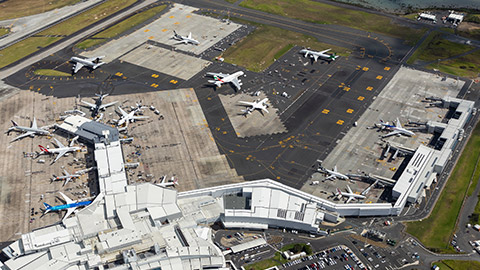
Airlines
Airlines connect destinations around the world and within New Zealand and make it possible for people to get to new and exciting places quickly and efficiently. Within the airline sector itself there are several different tiers which offer customers choices. These tiers include:
Full-service carriers offer a full range of services and amenities and aim to provide a high-quality travel experience through all of economy, business and first class tickets. They often have an extensive network of routes which include international destinations, offer complimentary food and beverage service, in-flight entertainment, airport lounges for premium passengers and frequent flyer reward programmes and alliance with other airlines for seamless travel.
Examples: Air New Zealand, Emirates, Singapore Airlines
Low-cost carriers provide affordable travel by minimising costs and offering a “no-frills” operation. They are often have a network of point-to-point short- and medium-haul destinations with a single class of service. They usually charge add-on costs for meals, baggage and seat selection and are efficient in their use of aircraft with quick turnaround times. LCCs are important in keeping prices down across the industry and opening up new routes.
Regional carriers operate smaller aircraft on short-haul, usually domestic, routes and can feed passengers from smaller centres into the networks of larger airlines. They are important in connecting remote and less densely-populated areas to larger hubs.
Examples: QantasLink, Sounds Air, Air Dolomiti
Charter airlines operate services for tour operators, private groups or special events. They are usually sold as part of a package deal and their scheduling is flexible based on the needs of the client. They can operate on an ad-hoc basis as opposed to a fixed schedule. They are especially useful in providing extra capacity during peak travel periods and for special occasions and to service niche locations.
Examples: TUI Airways, Condor Airlines, Jet2
Rail Services
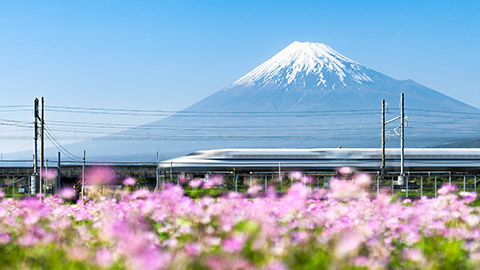
Rail is a crucial part of many travel networks around the world and is likely to become even more important in the future. Rail travel is considered far less impactful on the environment than flying, to the point where some European countries have actually banned some short-haul flights. France has prohibited flights where an alternative train journey of under 2.5 hours exist. As a comparison, domestic flights emit 133g C02 per km per passenger whereas Eurostar is only responsible for emitting 6g (BBC News, 2023). Many countries have networks of fast trains connecting cities, regions and even countries:
Europe has an extensive and very developed rail network which connects cities and countries, and operators there have a mixed fleet of high-speed and lower-speed regional trains. You can even travel under the English Channel from London to mainland Europe on Eurostar. Some key European operators include:
- Société National de Chemin de Fer (SNCF, France)
- Deutsche Ban (DB, Germany)
- Ferrovie dello Stato (FS, Italy)
- Renfe (Spain)
- British Rail (United Kingdom)
Japan, China, South Korea and Taiwan all have extensive high-speed rail networks.
- Japan’s Shinkansen service was the world’s first bullet train and has transported more than 6 billion passengers since 2003.
- China has the world’s most extensive high-speed rail network with more than 40,000 kms. It carries more than 2 billion passengers per year and some routes reach the highest speeds in the world, at around 317km/h
- High speed rail networks exist and are being developed in Hong Kong, Indonesia and Uzbekistan.
- India has one of the largest rail networks in the world and train travel is a vital part of moving people but is less technically developed than other countries. The Indian network covers more than 108,000 kms with more than 13,000 train services every day and no high-speed services.
- Vietnam and Thailand also have important rail networks which are popular with locals and travellers alike.
The United States has a developed rail network which is more focused on freight transport than passenger transport. However, Amtrak operates a national network across the USA and into Canada, moving around 23 million people per year (in 2022).
Like the USA, Canada has an extensive rail network, and is also primarily focused on freight rather than passenger transport.
Both Canada and the USA offer scenic train trips for tourists, such as the Rocky Mountaineer and the Empire Builder.
Australia is a vast country with huge unpopulated areas. Most train travel is commuter or connecting major cities. There are some long-distance routes, like the Indian Pacific a 4325km route connecting Sydney to Adelaide then Perth which takes 5 days.
In comparison with many other countries around the world, New Zealand’s train network is very small in scale. There are commuter services in Auckland and Wellington, but most other passenger services are scenic routes for tourists. Examples of these include the TranzAlpine (touted as one of the world’s great train journeys) and the Northern Explorer, linking Auckland and Wellington.
Sleeper Trains

Sleeper trains combine long-distance train travel with accommodation and on some routes makes for a viable and more environmentally-friendly alternative to flying. It is possible to travel on many routes connecting, for example London with Fort William in the north of Scotland, Paris with Vienna, Tokyo with Osaka, Bangkok with Chiang Mai, Ho Chi Minh City with Hanoi and Beijing, Moscow with Vladivostok etc.
Sleeper trains range from the opulent and luxurious (e.g. the Orient Express and India’s Royal Rajasthan), to cheap services for locals like Mumbai to Goa. Fare choices mean that well-off tourists and budget-conscious backpackers alike can travel overnight across large distances, obviously with varying levels of comfort and service.
Bus and Coach Services

Bus and Coach companies are a cheap way to travel long distances in many parts of the world. They share some of the same features as train travel, with fixed routes and timetables, but fares are usually lower. As with train travel, sleeper bus services are also available on some longer routes and are very popular with locals and budget-conscious travellers alike. As an example, the Reunification Express train from Ho Chi Minh City to Danang in Vietnam costs around $58US per person in a 2nd-class 4-berth sleeper cabin and takes around 18 hours but a similar trip on a sleeper bus costs around $20US per person, taking around 20 hours.
Ferry Services
Ferries are another important way for tourists, travellers and locals to get around when crossing oceans, lakes or rivers. Ferries may carry only foot passengers, or a combination of foot passengers and their vehicles. They differ from cruises in both purpose and level of service: ferries are geared to transport people from A to B in the most efficient way, whereas cruises are leisure-oriented and may offer entertainment, dining experiences, comfortable accommodation and a sight-seeing itinerary.
Car Rentals

Car rental services play an important part of travel and tourism by providing people with independence, flexibility and convenience when travelling. Car rentals allow tourists to explore urban and rural areas alike and to travel according to their own schedule. This sector allows travellers to explore areas which are not covered by other transport modes and allow access to off-the-beaten-path destinations.
As with airlines and trains, car rental services come in a variety of prices ranging from budget-conscious options to luxury vehicles., and many companies are adding hybrid and electric vehicles to their fleets.
Driving in an unfamiliar country can pose dangers for tourists when it comes to understanding local traffic laws. For example, a major problem exists for travellers from most countries visiting the United Kingdom, Australia and New Zealand (amongst others) who need to drive on the left-hand side of the road, rather than the right-hand side they are familiar with. Look at this article from the New Zealand Herald showing a tourist driving on the wrong side of the highway in the Coromandel for more than 5 minutes.
Car Rental Companies
| Premium | Budget |
|---|---|
| Avis New Zealand | Budget New Zealand |
| Hertz New Zealand | Go Rentals |
| Europcar New Zealand | Ezi Car Rental |
| Sixt | New Zealand RentaCar |
Campervans
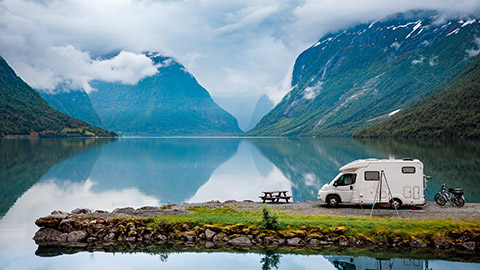
Campervans allow tourists to have the convenience and independence afforded by car rental, but with the added advantage of accommodation included. As with car rental companies, there are several different companies operating in New Zealand offering different levels of service, vehicle size and comfort to meet a range of budgets. Some of these include: Maui Motorhomes, Britz Campervans, Mighty Campers, Jucy Rentals, Kiwi Motorhomes, Freedom Campers etc.
Complete the following one-page Documentation Tool activity by typing directly into the box.
The accommodation sector is a crucial component of the travel and tourism industry which provides essential services to travellers and tourists. This sector encompasses a wide range of lodging options which not only offer a place to stay but aim to enhance the overall travel experience. The accommodation sector contributes significantly to the local economy by creating jobs, generating revenue and promoting local culture. Adaptability and innovation in this sector, including the integration of technology and sustainable practices, are key to meeting the evolving needs and preferences of modern travellers.
Hotels
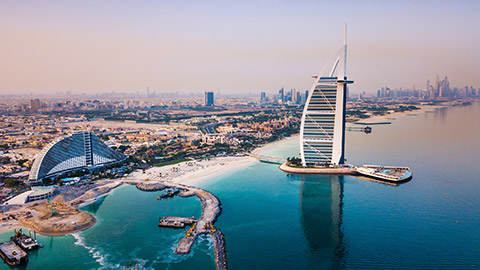
Hotels are a traditional and widely available form of accommodation which ranges from budget-friendly to luxury. Many hotels offer amenities such as restaurants, room service, housekeeping and some have pools, gyms or spas. Hotels are often found in locations which are popular with tourists and close to city attractions, leisure activities or cultural sites. A one- to five-star-rating system is used to categorise the style and features of hotels, but the meaning of the star ratings may differ from country to country. CNN travel has this guide to what to expect from differently-rated hotels:
One Star
- Small to medium-sized hotel which is clean and secure
- Could be part of a budget chain
- Likely to have a TV and phone
- May have a restaurant but unlikely to have room service
- Likely to be “conveniently-located to moderately-priced attractions”
- Fee-based services and facilities may be available
Two Star
- A little more personal
- Public access restricted after hours with no 24/7 reception service
- Limited services or facilities
Three Star
- Attractive lobby area with 24/7 reception
- May have a pool and/or a fitness centre
- A comfortable stay with w-fi, work desk and minibar
- Likely to have a restaurant, or nearby dining options
Four Star
- All amenities above, plus concierge and car valet service
- Superior quality and more comfort.
- Rooms likely to provide bathrobes, slippers and toiletries
- One or more restaurant(s) and an extensive room service menu.
Five Star
- Exceptional and personal service
- Large property with large rooms
- Comfortable, stylish furnishing and quality linen
- “Sumptuous” lobby
- Multiple fine-dining restaurants, lavish spas
- Concierge services with private tours or exclusive access to events.
More than Five Stars
- Some hotels claim 5+ or 6-star ratings to denote their even-higher level of luxury and exclusivity. Dubai’s Burj Al Arab hotel even claims to have a 7-star rating and rooms can cost up to $20,000NZ per night.
(Cunningham, 2022)
Qualmark
Qualmark is a quality assurance scheme for the tourism industry in New Zealand which has been around since 1993 which is run by Tourism New Zealand. Qualmark rates accommodation businesses with a star system similar to the system described above, but also gives gold, silver and bronze awards to tourist attractions and activities , like Hell’s Gate Thermal Reserve in Rotorua:

(Hell’s Gate, n.d.)
Motels
Motels started appearing as road networks developed and cars became the predominant mode of transport in the early 20th century (Skyscanner, n.d.). They are usually found near main roads and are often located outside cities, but along popular travel routes and popular holiday destinations. Some features commonly found in motels include:
- Designed for short stays
- Few (if any) amenities
- Motels are often designed around the parking area, with rooms arranged around it
- Usually cheaper than hotels
- Units may have a kitchen with basic cooking facilities, which make them economical for families and budget-conscious tourists.
Hostels and Backpackers
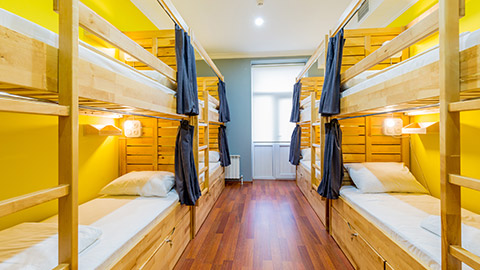
Backpacking is a rite of passage for many young adults who want to explore the world but have a very limited budget. Today’s young person travelling on a small budget is very likely to remain a keen traveller throughout their life and is also likely to have a larger travel budget to spend as they get older. Hostels and backpackers play an important role in providing accommodation to this segment of the tourism industry. In New Zealand, the youth visitor category (ages 18-34) contributes more than $2.2b to the economy and make up 31% of international visitors to the country.
Accommodation in hostels and backpackers ranges from private rooms to shared dorms and usually have shared kitchens and bathrooms. They also often have shared common areas for guests to mingle and socialise. The youth demographic is positive in promoting sustainability and environmental issues, so establishments which show these values are likely to be popular.
Holiday Rentals
Holiday rentals are popular with tourists seeking a more homely accommodation solution to their travels. They can range from apartments to baches or houses. They may even include use of a room in the property owner’s home while the owner occupies the rest of the premises. These types of rentals have some advantages over more traditional accommodation providers like hotels which make them like a home from home:
- More space for groups and families
- Privacy
- Usually have a fully equipped kitchen
- Usually have laundry facilities
Holiday rentals are popular all around the world, and New Zealand has plenty of options for this type of accommodation. Some of the key players in booking these accommodations in New Zealand include:
Airbnb is one of the most popular platforms worldwide which offers a wide variety of property types. It has a well-developed user interface which includes listings and prices, with hosts and guests able to post reviews.
Booking.com shares some of the features of Airbnb, but also lists traditional hotels and motels. It also has a global reach, which makes it a useful resource for planning multi-country trips.
Bookabach is part of a network of holiday rentals owned by Expedia and operating in France (“Arbitel”), Germany (“Fe-Wo-direkt”) and Australia (“Stayz”) under the umbrella name of Vrbo. Bookabach itself contains New Zealand listings and aims to cater to families and groups by providing self-catering accommodation.
Bachcare has a similar range of accommodation types as Bookabach, but also offers property management services for property owners who want their property to be managed for them. Bachcare is part of a small network in the Sykes Holiday Cottages portfolio, which includes New Zealand, the UK and Ireland.
Holiday Houses lists properties from TradeMe’s large user base in New Zealand and has a range of options from budget to luxury.
Resorts
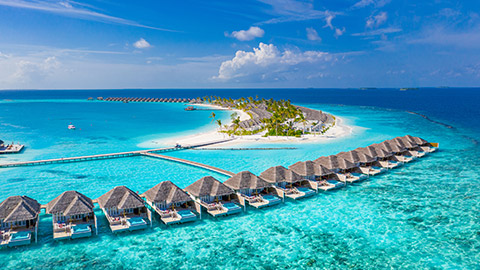
Resorts are destinations which provide a comprehensive range of tourist amenities. They are usually located in premium locations which may be beaches, mountains or exotic locations and offer full accommodation, dining, entertainment and leisure activities. Features of resorts include:
- Comfortable, often luxurious rooms, suites or villas
- Multiple restaurants and cafés with a variety of cuisines
- Recreational facilities, such as swimming pools, tennis courts etc.
- Spas and fitness centres
- Childminding services
- Entertainment, such as live music and shows, nightclubs, cultural activities
- Concierge services, room service
- All-inclusive packages
Click on these links to explore a few examples of notable resorts:
- Hurawalhi Island Resort, Maldives
- Sandibe Okavango Safari Lodge, Botswana
- Como Uma Ubud, Bali
- Huka Lodge, Taupō
- Wharekauhau, Palliser Bay
Campgrounds
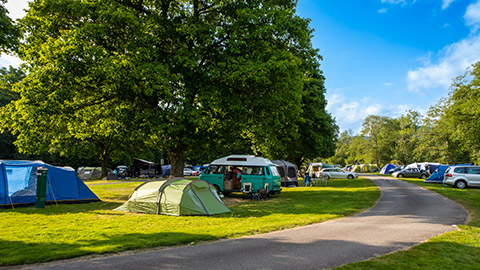
Campgrounds play an important role in providing leisure accommodation facilities at a very low cost. They are often located in popular holiday spots and out-of-the-way locations. They cater to budget conscious travellers and those who enjoy a closer connection to nature. There are a variety of campground options available in New Zealand ranging from DOC (Department of Conservation) sites with no facilities to holiday parks, like Top 10 which offer powered and unpowered tent sites, motorhome sites and even fully-equipped apartments and cabins
Activity
Explore the Accommodation Association New Zealand’s website and explore what they do, and how they help hospitality businesses.
Complete the following five-pages Documentation Tool activity by typing directly into the box. You have the option to save your answers on the last page.
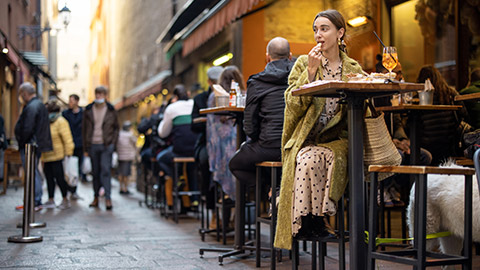
I think food, culture, people and landscape are all absolutely inseparable.Anthony Bourdain
The F&B industry is truly vast and covers a wide range of activities around the production and serving of food and beverages for human consumption. The United Nations World Tourism Organisation states that up to 30% of a tourist’s budget is spent on food and beverage. Beyond the necessary basic sustenance we all need, the quality of food and beverages can make or break a traveller’s experience of a destination and experiencing local cuisine is the main way for them to immerse themselves in the culture of a destination. In fact, culinary tourism has become a motivator in destination choice, with travellers seeking unique gastronomic experiences from around the world (Duncan, 2023).
Gastronomy Tourism
Gastronomy tourism is a type of tourism activity characterised by the visitor’s experience linked with food and related products and activities whilst travelling. Eno-tourism (wine tourism) is a subset of gastronomy tourism which is related to visiting vineyards and wineries and tasting, consuming and purchasing wine near the source of production. These kinds of tourism can help local economies and create new destinations and are often used as part of the promotion and branding of destinations (Gastronomy and Wine Tourism, n.d.).
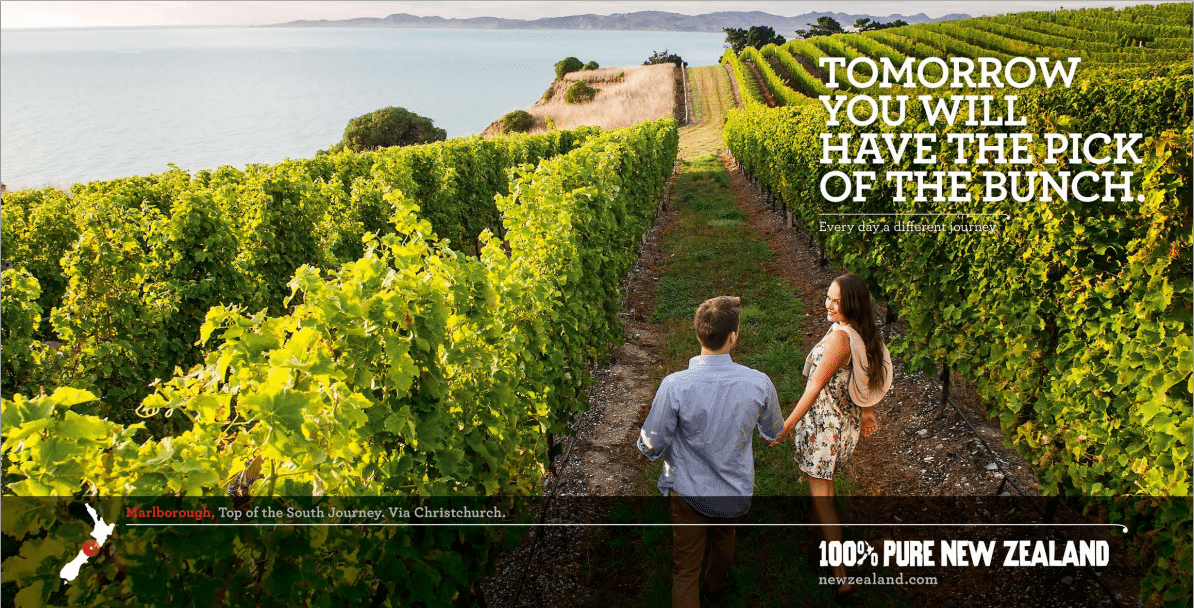
(Shankman, 2015)
Types of Food and Beverage Operation
Food and beverage operations are diverse and cater to the entire range of tourists and travellers.
Many hotels offer dining options, ranging from casual cafés to fine dining restaurants and bars. They often offer a mix of local and international cuisines
Food and beverages are commonly part of an all-inclusive resort package. Resorts usually provide a choice and variety of dining options, which could include beachside barbeques, poolside bars, casual and fine dining restaurants or buffets. When guests are staying at the same location for an extended period of time (one week or longer), providing choice and variety in food and beverages is an important factor in enhancing their experience of the whole holiday.
Similar to resorts (but even more so), cruise ships have a captive audience and therefore usually have a similar range of F&B options.
Independent travellers and tourists can explore the local culinary scene of their destination. Some popular destinations may offer the usual suspects of global fast-food joints, but more intrepid travellers will be keen to check out local cuisines. Depending on where in the world travellers are, they can choose from high-end dining in restaurants, to cafés, street food, food trucks, bakeries, delis etc. Using local knowledge from the staff at their accommodation, word of mouth, or a reputable travel guide can be helpful in choosing a good place to eat, and this adventure is often part of the enjoyment of exploring a new destination.
Long-haul and FSC airlines are likely to offer a F&B service during the flight. These are provided by specialised catering operators close to airport hubs, and need to provide high-quality and safe meals which consider dietary restrictions, nutrition, ability to be regenerated, seasonality, cultural preferences. Examples of major global companies who operate in New Zealand include LSG Sky Chefs and Gate Gourmet.
Event caterers provide food and beverage for conferences, weddings, corporate functions etc. They often prepare, cook and chill food at their base, then transport, regenerate and serve the food at the event location. Some examples in Auckland include the Great Catering Company, Little Wolf Catering, and Urban Gourmet.
Food trucks are a vibrant part of the food and beverage environment, offering diverse and innovative dishes directly to customers in various locations. They are popular in urban areas, festivals, and events, providing quick, affordable meals that appeal to both locals and tourists. Food trucks are an effective way to provide a small menu offer rapidly and affordably for people needing quick, good quality and value for money food and beverages.
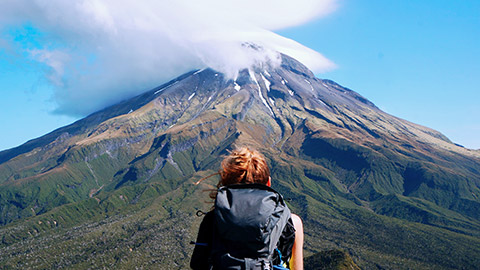
The recreation and entertainment sector encompasses a wide range of activities, sites and experiences and is a major driver in attracting tourists and travellers to a particular location. It includes natural and man-made attractions, cultural and historical sites, theme parks, adventure activities and recreational facilities. It offers diverse and engaging activities which can enhance their travel experience. Let’s have a look at some examples:
Natural attractions include landscapes, geological formations and ecosystems which draw visitors to their beauty, uniqueness or ecological significance. Some notable examples include:
These include landmarks, monuments and heritage sites which reflect the history, culture and traditions of a place:
Theme parks and amusement parks are major draws for families and offer rides, entertainment and thrills. They are a top reason why some tourists choose a particular destination for their holiday:
Adventure and outdoor activities are one of (if not the) biggest driver of international visitors to New Zealand and are hugely popular with locals too. Likewise, they are also a key motivator for New Zealanders to travel overseas to find excitement and physical challenges in natural settings. Some popular activities include:
Recreational facilities are designed to offer a range of amenities to enhance the leisure experiences of tourists and provide opportunities for relaxation, sports and other activities. This sector includes golf courses, resorts, spas, wellness centres and sports complexes, amongst others.
You’ve reached the end of the learning material for this topic. You should be starting to get a good understanding at the huge scope, variety and possibilities available in the hospitality travel and tourism industry here in New Zealand and around the world. The next topic introduces the key learning for this module, looking at strategic hospitality management.
